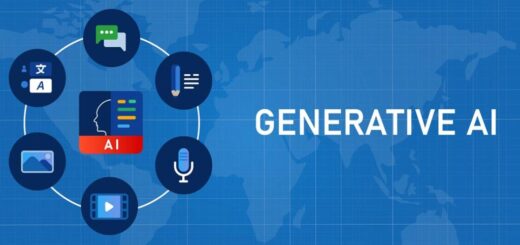The top-down approach relies on the most reliable and quality higher authority figures to fully well determine larger goals that will filter down to the tasks of lower level employees.
In comparison, the bottom-up style of the whole communication features a decision-making process that gives the entire staff a voice in company goals.

What are characteristics of top down analysis?
The top–down approach to investing focuses on the big picture, or how the overall economy and macroeconomic factors drive the markets and, ultimately, stock prices. They will also look at the performance of sectors or industries.
What are the characteristics of top down development strategies?
The top–down approach relies on higher authority figures to determine larger goals that will filter downto the tasks of lower level employees. In comparison, the bottom-up style of communication features a decision-making process that gives the entire staff a voice in company goals.
What is the meaning of top down approach?
A “top–down” approach is where an executive decision maker or other top person makes the decisions of how something should be done. This approach is disseminated under their authority to lower levels in the hierarchy, who are, to a greater or lesser extent, bound by them.
What is an advantage of top down design?
The advantage of this approach is that decisions can be made and implemented very quickly. This is particularly important when time is limited. The other benefit of top–down project planning is that it helps align the project goals with the organization’s strategic goals as upper management is giving the directions.
What are the main components of a top down design?
In top–down design, a system’s overview is designed, specifying, yet not detailing any first-level subsystems. Then, every subsystem is refined in greater detail, for example, sometimes dividing into many different levels of subsystem, so that the whole specification is decomposed to basic elements.
What is a major drawback of the top down approach?
Disadvantages of the top–down approachinclude: Low participation (this is likely to influence the implementation of the plans in a negative way). Requires a lot of knowledge at the top level. Does not use specialized knowledge which may be present in the lower echelons of the organization.
What is an example of top down processing?
Top–down processing refers to the use of contextual information in pattern recognition. For example, understanding difficult handwriting is easier when reading complete sentences than when reading single and isolated words. This is because the meaning of the surrounding words provide a context to aid understanding.
What is the difference between top down and bottom-up approach?
While the top–down approach focuses on breaking down a big problem into smaller and understandable chunks, the bottom–up approachfirst focuses on solving the smaller problems at the fundamental level and then integrating them into a whole and complete solution.
What are the similarities of top down approach and bottom-up approach?
Although these two models represent two opposing strategies, they share similarities in the way a company identifies its key objectives. At a very basic level, the top–down approach attempts to move from the general to the specific, while the bottom–up approach finds its way from the specific to the general.
Is C top down approach?
why c is called as the top down approach? Cprogramming uses top down approach to solve a problem. Top down approach starts with high-level design and ends with the low-level implementation.
What is top down listening strategy?
Top – Down Listening Strategies Refers to the use of background knowledge in understanding the meaning of the message. Background knowledge Consists of context, the situation and topic, and co-text(what came before and after).
What are different types of listening?
Familiarize yourself with these different types of listening so you can strengthen and improve your ability to critically think and evaluate what you have heard.
- Appreciative Listening. When you listen for appreciation you are listening for enjoyment.
- Empathic Listening.
- Comprehensive Listening.
- Critical Listening.
What are the purpose of listening?
Listening is the ability to accurately receive and interpret messages in the communication process. Listening is key to all effective communication. Without the ability to listen effectively, messages are easily misunderstood.
What are the four purpose of listening?
The four purposes of listening are listening for appreciation, listening for comprehension, listening to show support, and critical listening.
What are the 5 listening skills?
There are five key techniques you can use to develop your active listening skills:
- Pay attention.
- Show that you’re listening.
- Provide feedback.
- Defer judgment.
- Respond appropriately.
What are the two main purpose of listening?
Clarity. Listen to help others find clarity. Provide opportunity for people to hear their own voice. Those who hear their own voice learn what they really think.
What are the factors to consider when you listen?
All The Factors Affecting ListeningComprehension
- Your pronunciation.
- Your grammar.
- Knowledge of how sounds merge or get reduced.
- Your overall listening time.
- Visual support.
- Vocabulary size.
- Concentration.
What is the importance of effective listening?
Research has found that by listening effectively, you will get more information from the people you manage, you will increase others’ trust in you, you will reduce conflict, you will better understand how to motivate others, and you will inspire a higher level of commitment in the people you manage.
What are the components of effective listening skills?
The listening process involves four stages: receiving, understanding, evaluating, and responding.
What are the four learning skills?
What are learning skills? The 21st century learning skills are often called the 4 C’s: critical thinking, creative thinking, communicating, and collaborating. These skills help students learn, and so they are vital to success in school and beyond.
What are four skills of communication?
Reading, writing, speaking, and listening are basic communication skills necessary for effective communication in any environment, particularly the workplace.
What is the characteristics why top-down model is commonly used?
In the software development process, the top-down and bottom-up approaches play a key role. Top-down approaches emphasize planning and a complete understanding of the system.
It is inherent that no coding can begin until a sufficient level of detail has been reached in the design of at least some part of the system.
What are the features of top-down approach?
In the top-down approach to management, a team or project manager makes decisions, which then filter down through a hierarchical structure.
Managers gather knowledge, analyze it, and draw actionable conclusions. They then develop the processes that are communicated to and fully implemented by the rest of the team.




